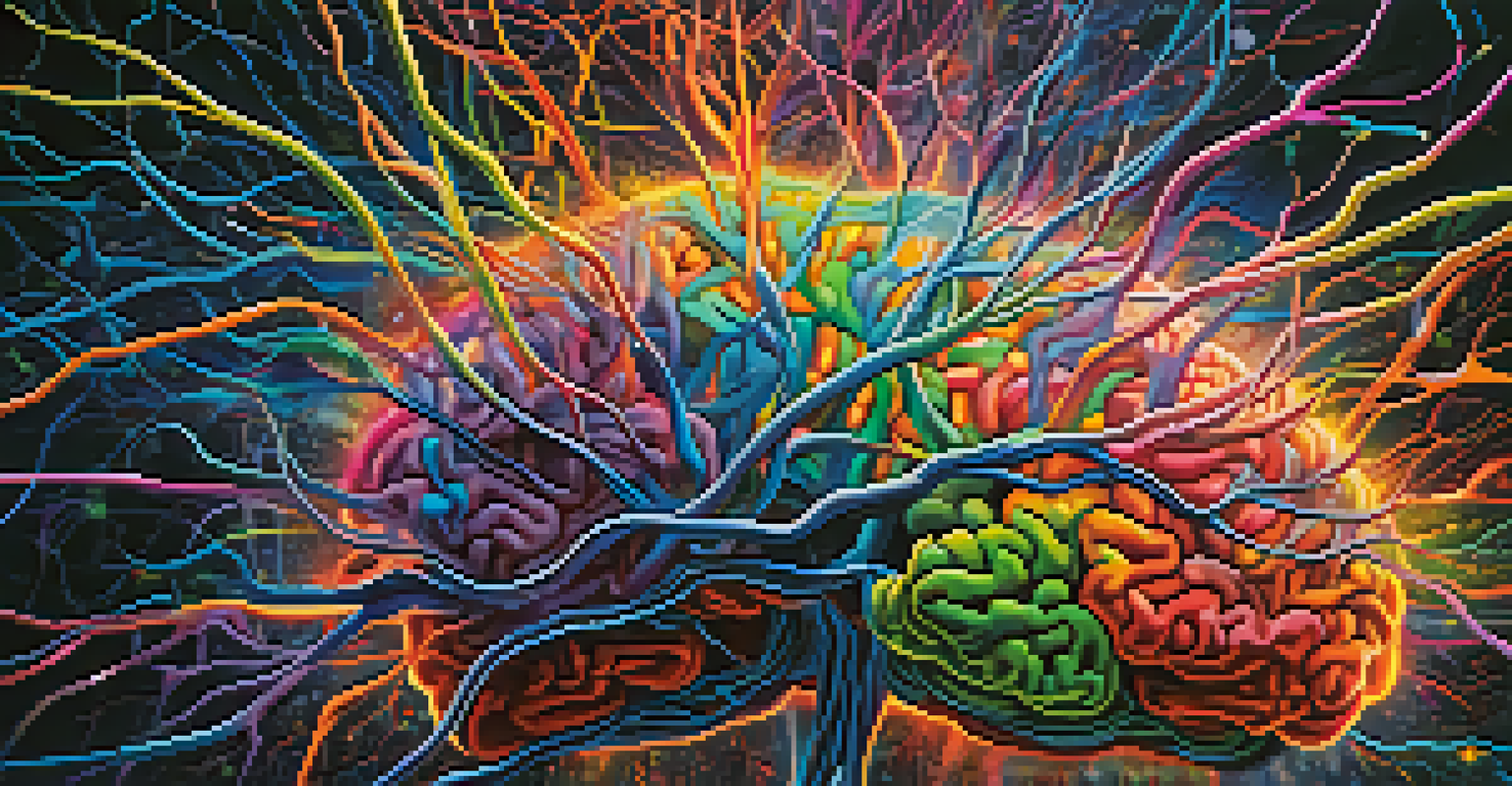How Neuroplasticity Can Help Heal the Brain from Addiction

Understanding Neuroplasticity and Its Importance
Neuroplasticity is the brain's remarkable ability to reorganize itself by forming new neural connections throughout life. This means that even after significant trauma or addiction, the brain can adapt and change. Just like how a river can carve new paths through the landscape, our brains can reshape themselves based on experiences and learning.
The brain is a dynamic, living structure that is constantly changing based on our experiences and interactions with the world.
This adaptability is crucial for recovery from addiction. When someone struggles with substance use, their brain's pathways can become rigid, often leading to compulsive behaviors. However, through neuroplasticity, individuals can begin to forge new, healthier connections that promote recovery and well-being.
In essence, understanding neuroplasticity offers hope; it highlights the potential for change, suggesting that recovery from addiction isn't just possible, but achievable through dedicated effort and practice.
The Science Behind Neuroplasticity and Addiction
At its core, neuroplasticity involves two main processes: synaptic plasticity and structural plasticity. Synaptic plasticity refers to the strengthening or weakening of existing connections between neurons, while structural plasticity involves the creation of new connections. Both play a vital role in how we learn and adapt, especially during recovery.

Addiction can hijack these processes, leading to a cycle of craving and use that overrides healthier decision-making pathways. For instance, the brain's reward system may become hyper-responsive to substances, making it challenging to find joy in everyday activities. However, neuroplasticity allows for the re-routing of these pathways, helping individuals regain control.
Neuroplasticity Enables Recovery
The brain's ability to reorganize itself through neuroplasticity provides hope for individuals recovering from addiction.
By engaging in therapeutic practices, such as cognitive-behavioral therapy (CBT) or mindfulness, individuals can stimulate neuroplasticity. This not only aids in breaking the cycle of addiction but also helps to rebuild the brain's natural reward system over time.
How Therapy Promotes Neuroplasticity in Recovery
Therapeutic approaches, particularly those that encourage self-reflection and emotional regulation, are essential in promoting neuroplasticity. For example, therapies like CBT help individuals recognize and challenge harmful thought patterns, fostering new, healthier ways of thinking. This shift can lead to significant changes in behavior and emotional responses.
Recovery is not a race. You don’t have to feel guilty if it takes you longer than you thought.
Moreover, engaging in group therapy sessions can create a supportive environment where shared experiences and encouragement further enhance neuroplastic changes. Listening to others' stories can inspire hope and motivation, reinforcing the idea that recovery is a collective journey.
Ultimately, therapy not only addresses the underlying issues of addiction but also actively promotes the brain's ability to change, making recovery a dynamic and empowering process.
Mindfulness and Meditation: Tools for Change
Mindfulness and meditation are powerful tools that can significantly enhance neuroplasticity. These practices encourage individuals to focus on the present moment, which can help calm the mind and reduce cravings. By training the brain to respond differently to triggers, individuals can cultivate a sense of awareness that empowers them in their recovery journey.
Research shows that regular mindfulness practice can lead to structural changes in the brain, particularly in areas related to self-regulation and emotional processing. This means that through consistent practice, individuals can literally reshape their brain's response to stress and temptation.
Therapeutic Practices Foster Change
Engaging in therapies like CBT and mindfulness promotes neuroplasticity, helping individuals build healthier thought patterns and behaviors.
Incorporating mindfulness into daily routines can create new habits that support long-term recovery, proving that even small changes can lead to significant outcomes over time.
The Role of Physical Activity in Healing the Brain
Physical activity is another vital component that supports neuroplasticity and recovery from addiction. Exercise not only boosts mood by releasing endorphins but also promotes the growth of new neurons in the brain. This biological change can enhance cognitive function and emotional resilience, both of which are essential in overcoming addiction.
Moreover, engaging in regular physical activity can help individuals develop healthier coping mechanisms. Instead of turning to substances to manage stress or anxiety, they can channel those feelings into exercise, creating a positive feedback loop of health and well-being.
Whether it's a brisk walk, yoga, or a dance class, finding an enjoyable physical activity can be a game-changer in recovery, offering both physical and mental benefits.
Nutrition's Impact on Brain Health and Recovery
Nutrition plays a crucial role in supporting neuroplasticity and overall brain health. A well-balanced diet rich in omega-3 fatty acids, antioxidants, and vitamins can nourish the brain, enhancing its ability to heal and adapt. Foods such as fatty fish, nuts, fruits, and vegetables are particularly beneficial in promoting brain function.
Moreover, proper nutrition can help regulate mood and energy levels, which are often affected during recovery. By focusing on a healthy diet, individuals can improve their mental clarity and emotional stability, making them better equipped to face the challenges of addiction recovery.
Supportive Environments Matter
Creating a positive support system enhances recovery by reinforcing healthy behaviors and stimulating new neural pathways.
In essence, fueling the brain with the right nutrients creates a solid foundation for healing, reinforcing the idea that recovery is not just about abstaining from substances but also about nurturing the body and mind.
Building a Supportive Environment for Recovery
Creating a supportive environment is essential for fostering neuroplasticity and successful recovery from addiction. Surrounding oneself with positive influences, whether through supportive friends, family, or recovery groups, can help reinforce healthy behaviors and choices. This support system acts as a safety net, making the recovery journey less daunting.
Moreover, engaging in community activities or volunteer work can provide a sense of purpose and belonging. These social interactions can stimulate new neural pathways and reinforce the idea that connection is a crucial part of healing.

Ultimately, nurturing a positive environment not only enhances the recovery process but also strengthens the brain's ability to adapt and thrive in the face of adversity.